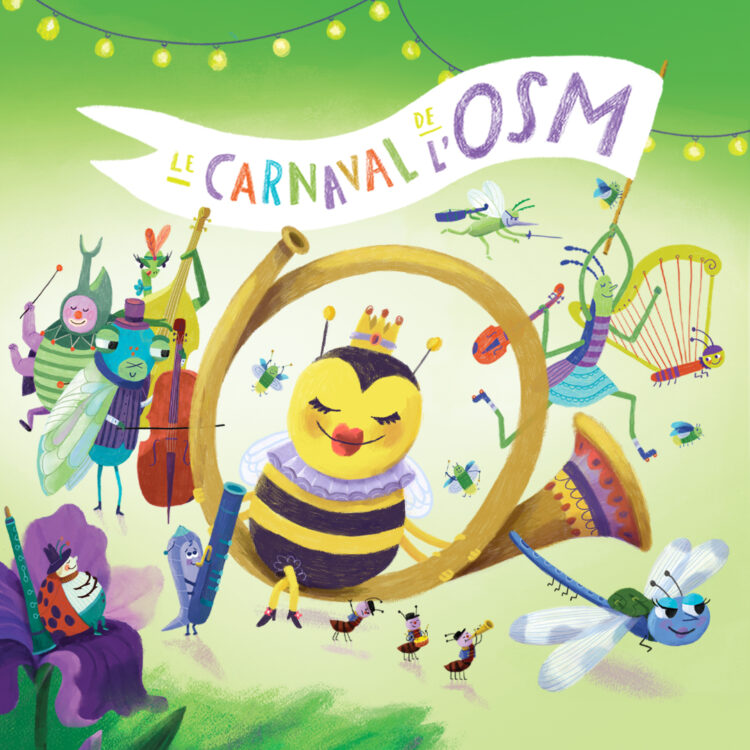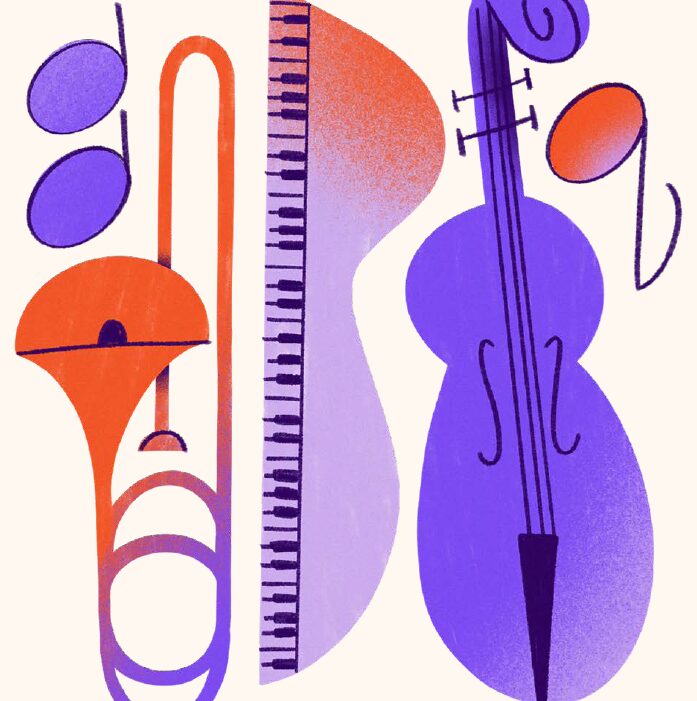Interview with Nathalie Leroux

The OSMose project is an OSM initiative designed to introduce classical music in a school setting to children with autism spectrum disorder (ASD) as well as to children in the regular curriculum. This project spanning several years offers these students special workshops given by members of the Orchestra and it will conclude with the presentation of a concert at the Maison symphonique, conceived entirely for these young spectators, particularly those with special needs. Nathalie Leroux is this project’s resident music therapist.
Q. HELLO, NATHALIE LEROUX. YOU ARE A MUSIC THERAPIST WITH THE OSMOSE PROJECT. FIRST, COULD YOU BRIEFLY INTRODUCE YOURSELF AND TELL US WHAT YOUR PROFESSION ENTAILS?
A. I have worked as a music therapist with ASD children (children who are on the autism spectrum) for the past 28 years. I have developed my own approach, which I practise in elementary, preschool and daycare settings, both with special needs children and regular curriculum children. I care deeply about inclusion, and I think that music is an excellent avenue for achieving it. While music is the tool I use in my work, my goal is not to train musicians. It’s about supporting individuals in their development and their process. Music functions as an engine, as a tool for expression that facilitates social interaction, especially in ASD children, for whom communication, social skills, expression, and emotion aren’t always second nature. Music therapy is there to encourage them, to spur them on a little further, no matter who they are or how far they have come.
Q. WHAT DOES MUSIC PROVIDE THAT LANGUAGE CANNOT?
A. Children who have something bothering them will generally not say in so many words they are angry or that they experienced something hurtful during recess. They know something is going on but aren’t often able to verbalize it. When a child arrives in my studio and I feel that something is bottled up inside, we’ll begin by connecting about it rhythmically, using percussion instruments, and this engagement will reflect how they feel. If children can channel their emotions in musical play, then gently, I can bring them back to a state that is more receptive to communication. Then, they are better able to express what it is they are feeling, and we can try to solve the problem from there. Music serves to facilitate all social codes. It takes them by the hand and leads them toward verbalization. Music serves to awaken their voices.
Q. MUSIC THERAPY IS STILL NOT VERY WIDELY KNOWN. WHO IS IT FOR?
A. For anyone—children, adults, seniors—who has an interest in music. There is always a way to connect with someone via some musical element. If I am working with someone who is stressed or anxious, I’ll engage them vocally, or we’ll work with breath, tonus, or posture. The goal is to regain a sense of wellness. It is well known that music releases the pleasure hormone. In music therapy, music is used to help a person through a process or to flourish despite any challenges they may be experiencing. It can also be practised in a group setting, which offers its own set of possibilities and benefits.
Q. NOW LET’S TALK ABOUT THE OSMOSE PROJECT. COULD YOU TELL US A BIT ABOUT IT, PARTICULARLY ABOUT THE PROJECT’S OBJECTIVES?
A. I believe OSMose is essentially a social project borne by music. For me, its primary objective is to offer a space for music and by the end of it, a performance where my students can be exactly who they are and feel at ease. It is to help them to discover new sensations via orchestral music and enable families to experience that together, without having to worry about causing a disruption. Parents know that children involved in OSMose activities are accepted for who they are and that a well-considered structure lets them truly enjoy themselves in the moment. This social project’s objective really is to embrace an inclusive approach to music, so that society opens its doors to these children. So that they are not systematically marginalized in society, which can stand to learn a bit more about ASD.
Q. OSMOSE WAS INTRODUCED IN BOTH ASD AND REGULAR-CURRICULUM CLASSES. HOW DID CHILDREN RESPOND DIFFERENTLY IN THE TWO CLASSES?
A. With ASD students, everything is done through music. If things get too verbal, they withdraw, as though you were speaking a foreign language. But as soon as music is played, their attention returns, and they experience the present moment intensely. In regular-curriculum classes, the students have lots of questions and there is far more verbal exchange. On the other hand, in these classes, other people’s gaze is felt more acutely, and self-consciousness can quickly set in when a guest musician requests a student’s participation. There is no such self-consciousness with ASD students! In both classes, music that a student recognizes will have a far greater impact on them and their responsiveness is immediately apparent.
Q. THE BENEFITS OF THE EXPERIENCE OFFERED BY OSM MUSICIANS ARE UNDENIABLE. WHAT DO THESE CHILDREN TEND TO GIVE BACK?
A. I think they give plenty back at a humanistic level. And I think it improves the musicians’ pedagogical flexibility because with ASD students, they have no choice but to modify their approach. Such children are not necessarily given to use an instrument in the standard way, and that forces the musicians to revise their framework. I also think that the experience of working with ASD children makes an impression on all human beings, but especially musicians, because music elicits a strong response in children.
Q. HOW CAN MUSIC HELP CHILDREN WITH ASD AND CHILDREN AND REGULAR-CURRICULUM STUDENTS IN THEIR NON-MUSICAL SCHOOLING? HOW CAN IT SUPPORT OR ASSIST THEM?
A. When ASD students come through my music studio or when there are workshops, they leave more open and receptive to learning, because they were able to channel their emotions via instruments. It provides security, knowing that they have this space that they can access. Musical exploration also helps to soften a certain rigidity. Rhythmic reading activities, for example, help with reading skills in general, as well as with coordination and memory. There is also, certainly, a mathematical component to rhythm. But most important, in my view, is the motivation and self-esteem gained when students are proud of what they achieved. When they create something musically, they feel empowered and more likely to excel in other subjects. It is fascinating to observe how some regular-curriculum students whose academic performance is on the weaker side will never miss a day when music is scheduled. They feel valued for the help they can provide to ASD students. When you feel good about yourself, capable, this extends out to other areas of life. Music generates this feeling.


